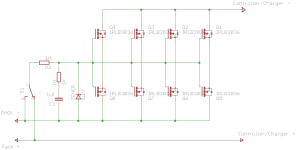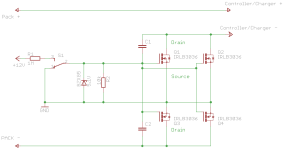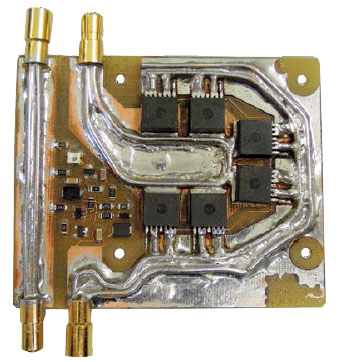Kineticman
1 mW
On Thursday I got around to replacing the MOSFETS and testing the old ones. I also added the additional 1M resistor between the Gate and Source and everything is working great now!! No more sparks when hooking up the Anderson Powerpoles and the reading from Gate to Negative switch line is at 11.2 volts. I tested the old MOSFETs and they were definitely damaged. Only thing I wish is that the switch would completely cut off the voltage from the battery, but other than that this works great for getting rid of the large spark with minimal drain!! Thanks again everybody! Attached is a small video of the circuit working now.
https://youtu.be/4y672zLSdZE
https://youtu.be/4y672zLSdZE





